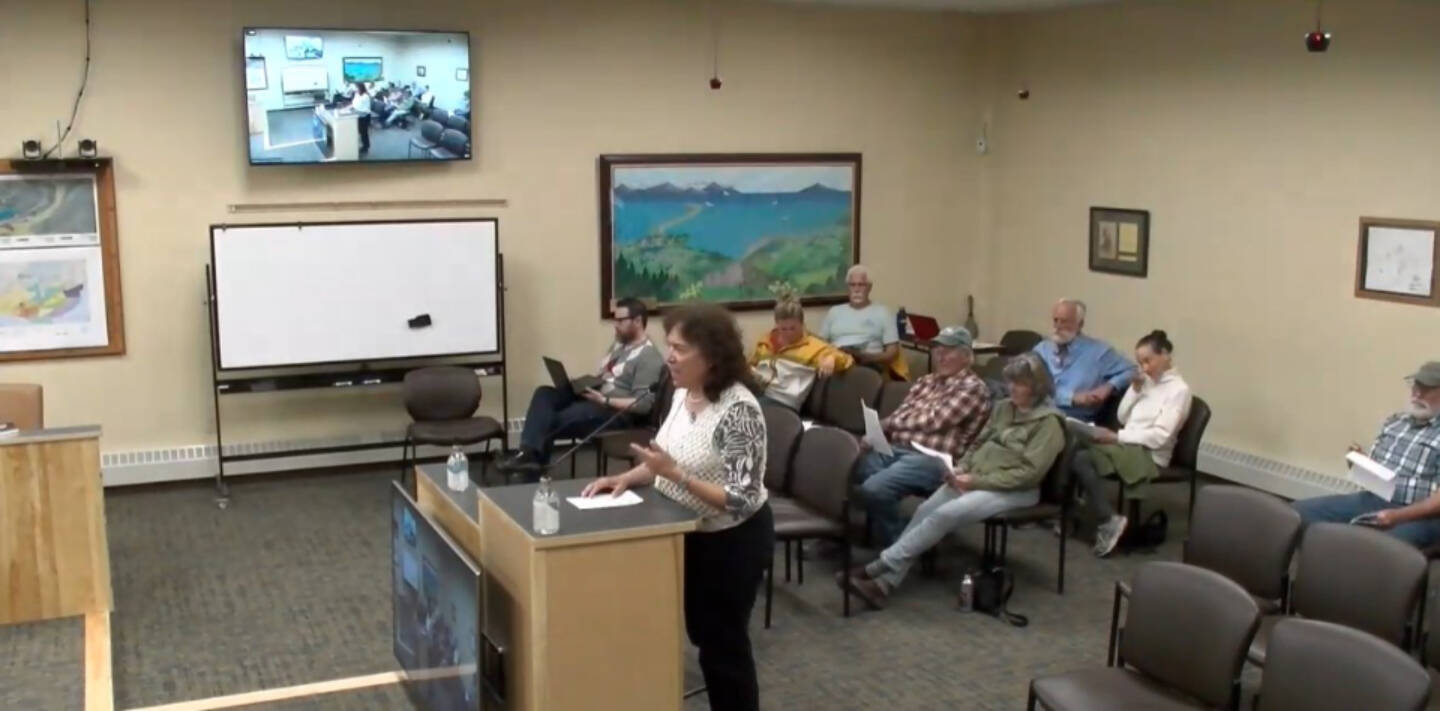Homer is leading the scene on going green.
The Homer City Council adopted Ordinance 23-46 last Monday accepting a grant directed toward the Kachemak Sponge Green Infrastructure Stormwater Treatment System project. As a further step, the council also adopted Resolution 23-078 approving a contract for appraisal services to support the project.
Ordinance 23-46 was first introduced at the June 26 regular council meeting, with an initial public hearing date held on July 24. At that time, city staff requested that the ordinance be postponed until Aug. 14 in order to “complete legal and financial due diligence to ensure the success of the grant agreement,” a July 18 memorandum to city council states.
But the project itself has been in the works for much longer than that.
Public Works director Jan Keiser addressed the council and audience members gathered in the Cowles Chambers at city hall during a second public comment period during the Aug. 14 meeting.
Keiser described how, when she first began working as Homer’s Public Works director and city engineer over three and a half years ago, she found in the planning documents something called the Low-Impact Development Planning Study “which postulated that we could save millions of dollars by using green infrastructure to treat and store stormwater as opposed to hardscape pipes and so forth.”
Keiser learned from various environmental nonprofits and public input that Homer had “a number of issues” related to drainage.
“We had problems with wetlands drying out. We had problems with stormwater flooding homes and businesses. We had water quality issues generated from stormwater, and a variety of drainage issues all related to stormwater,” she said last Monday.
According to some reports by geophysicist Geoff Coble, who owns Coble Geophysical Services in Homer and has done work on stormwater and erosion problems on Kachemak Drive for at least 10 years, Keiser said, there was a connection between all of the problems she named.
And thus came the idea to create a green infrastructure stormwater management and treatment system in Homer.
The project, which Keiser called “innovative and complex,” uses natural wetlands and peatlands to store and treat stormwater as opposed to a traditional hardscape stormwater management system. The project does involve “a lot of land, and some ditches and pipes to convey the water into wetlands and peatlands,” Keiser said.
The $1,171,410 grant to acquire the necessary lands, identified in collaborative efforts between the City of Homer and the Kachemak Bay National Estuarine Research Reserve, was received by the University of Alaska Anchorage from the National Oceanic and Atmospheric Administration. The City of Homer is a sub-recipient of the grant, according to the ordinance.
Resolution 23-078 takes the next step after acceptance of the NOAA grant.
According to a backup memorandum to the resolution from Keiser to city council, the project involves acquisition of 56.49 acres of wetlands, 46.41 of which will be preserved for conservation and therefore eligible for purchase using the NOAA grant, to be used for development of the treatment system.
Because federal funds will be used for part of the land acquisition, “stringent rules apply” — the property in question must be appraised, with those appraisals then reviewed by another independent appraiser, the memo states. Resolution 23-078 awards a contract for the first set of property appraisals.
The success of the City’s grant application process in coordination with KBNERR, as well as the adoption of Ordinance 23-46 at the Aug. 14 council meeting was met with excitement by all involved parties and members of the community.
“This project will be a model for nature-based treatment facilities for stormwater in cold regions, and NOAA is very excited and interested in our progress on this project,” Keiser said last Monday. “They want to use it as a model for other areas — Minnesota, New Hampshire, Maine, places like that.”
Keiser noted that the acceptance of the grant and the land acquisition was “just the beginning” of the project.
Coowe Walker, now-retired manager of KBNERR, recognized the high effort that city staff put in working with KBNERR to write the grant proposal.
“This is a very unique opportunity that we have to access these funds through NOAA and bring them into our community,” she told the council during the public comment period. “It’s a highly competitive process, and we got it, so it’s really exciting. This is the first big-scale green infrastructure stormwater project in Alaska, and it’s something that can be shown around not just the U.S., but around the world.”
Walker also noted the positive impact that the green infrastructure project and the conservation of the acquired wetlands and peatlands would have on local wildlife, including moose and salmon populations.
Several other community members also spoke their approval and enthusiasm for the grant award and the project during the public comment period.
Before the ordinance was passed, council members also shared their comments.
“I think when I first heard about this … I thought, ‘Wow, they have a lot of enthusiasm. I hope they have the data.’ And you provided the data, and you did the hard work. So the enthusiasm was just contagious. We caught it, and we’re here to join you in this partnership,” council member Caroline Venuti said.
Previous reporting on the Kachemak Sponge Green Infrastructure Stormwater Treatment System can be found at www.homernews.com/news/city-considers-accepting-grant-for-wetland-acquisition/.
The full audio recording of the Aug. 14 regular meeting is available at www.cityofhomer-ak.gov/citycouncil/city-council-regular-meeting-297.
The next city council regular meeting will be held on Monday, Aug. 28 at 6 p.m. in the City Hall Cowles Council Chambers.


